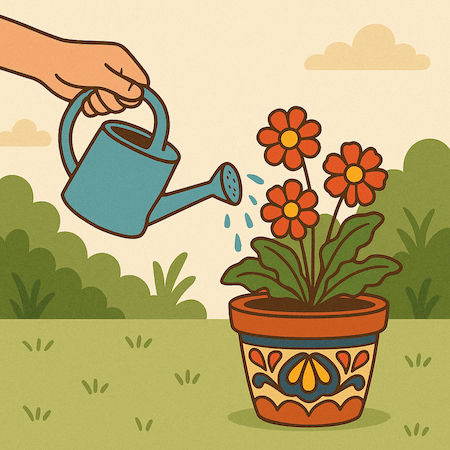
Jardín in Mexican Spanish: More Than Just a Garden
You’ve probably learned that jardín means “garden,” right? But in Mexico, it pops up in all kinds of surprising places – not just where the flowers grow.
Let’s check out what jardín really means in everyday Mexican Spanish:
🧸 Jardín de niños = Kindergarten (not an actual garden!)
One of the most common uses of jardín in Mexico is jardín de niños, the everyday and official way to say kindergarten or preschool. It’s a term everyone uses, from parents to government documents.
Mi hija ya entró al jardín de niños, está feliz con su maestra.
My daughter just started kindergarten — she loves her teacher.
In formal contexts, you might also see educación preescolar, but in daily conversation, it’s always el jardín.
🌼 Jardinera = Planted area or flowerbed
In cities and streets across Mexico, jardinera refers to any small planted area — like flowerbeds along sidewalks or at the center of roundabouts [US: traffic circles]. You’ll often see signs that say “No pisar la jardinera” (Don’t step on the flowerbed).
Pintaron las jardineras frente al mercado con colores muy vivos.
They painted the planters in front of the market in bright colors.
🌱 Tener buena mano para el jardín
This lovely Mexican expression means someone has a “green thumb” – they’re naturally good at growing and caring for plants.
Mi tía tiene buena mano para el jardín, todo lo que siembra se le da.
My aunt has a green thumb, everything she plants grows beautifully.
It’s a phrase full of affection, often said with a bit of admiration (and envy!).
And of course, jardín also shows up when we talk about parts of the house…
🏡 Jardín trasero and jardín de adelante
When talking about houses, Mexicans often distinguish between the front yard (jardín de adelante) and backyard (jardín trasero). These terms are widely understood and used in casual conversation.
Vamos a hacer la carne asada en el jardín trasero.
We’re going to grill in the backyard.
🌮 Final Tip
In Mexican Spanish, jardín is more than just a patch of grass – it’s a word that grows with you. From your first day at school to lazy afternoons grilling in the jardín trasero, this word weaves its way through daily life in ways that are deeply local.
So the next time someone in Mexico talks about el jardín, listen closely – you might learn more than just vocabulary 🌱